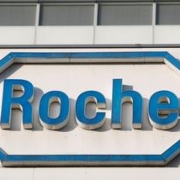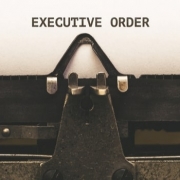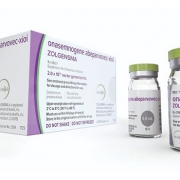The U.S. Food and Drug Administration approved Roche’s Enspryng for the central nervous system disorder neuromyelitis optica, putting the Swiss drugmaker head-to-head with Alexion’s Soliris in a costly treatment area.
White House Executive Order Aims to Boost Domestic Production of ‘Essential Drugs’
“Essential Drugs”, Association for Accessible Medicines, Biopharmaceutical, Business, Center for Drug Evaluation and Research (CDER), Donald Trump, Executive Orders, Federal Agencies, Manufacturing, Medical Supplies, PhRMA, Politico, Prescription Drug Costs, Prescription Medicines, Therapeutics, United States, White HouseIn an aim to create a strong domestic supply chain, President Donald Trump signed an Executive Order that calls for federal agencies to purchase “essential drugs” and medical supplies that are produced in the United States, rather than from abroad as is the current practice.
A meeting with top pharmaceutical executives that President Donald Trump promised wasn called off, a White House official said.
President Donald Trump will sign three executive orders on lowering prescription drug prices, White House Chief of Staff Mark Meadows said.
Zolgensma’s successful market uptake by payers may hold lessons for other manufacturers of costly gene therapies.
Among many of the insights provided in the IQVIA Institute for Human Data Science report “Global Medicine Spending and Usage Trends: Outlook to 2024,” global medicine spending is projected to increase from 2 percent to 5 percent annually through 2024 on a net basis, compared to 4.2 percent in the past five years.
One of the arguments biopharma companies make for the high cost of new drugs is the expense of drug development. A new study published in JAMA Network, “Changes in List Prices, Net Prices, and Discounts for Branded Drugs in the U.S., 2007-2018,” provides some concrete data to the argument.
With impeachment behind us and the elections looming, both parties are focused on healthcare, the policy topic of greatest concern to voters. More specifically, they are focused on lowering the cost of prescription drugs.
As the 2020 presidential election looms, debate about the price of prescription drugs and healthcare will intensify; healthcare communication leaders share their thoughts on how their pharma clients can be a constructive part of the conversations.
Even as lawmakers debate and malign proposed plans to lower the costs of prescription drugs in the United States, since the start of 2020, prices increased on more than 600 prescription drugs by an average of 5.2 percent.








